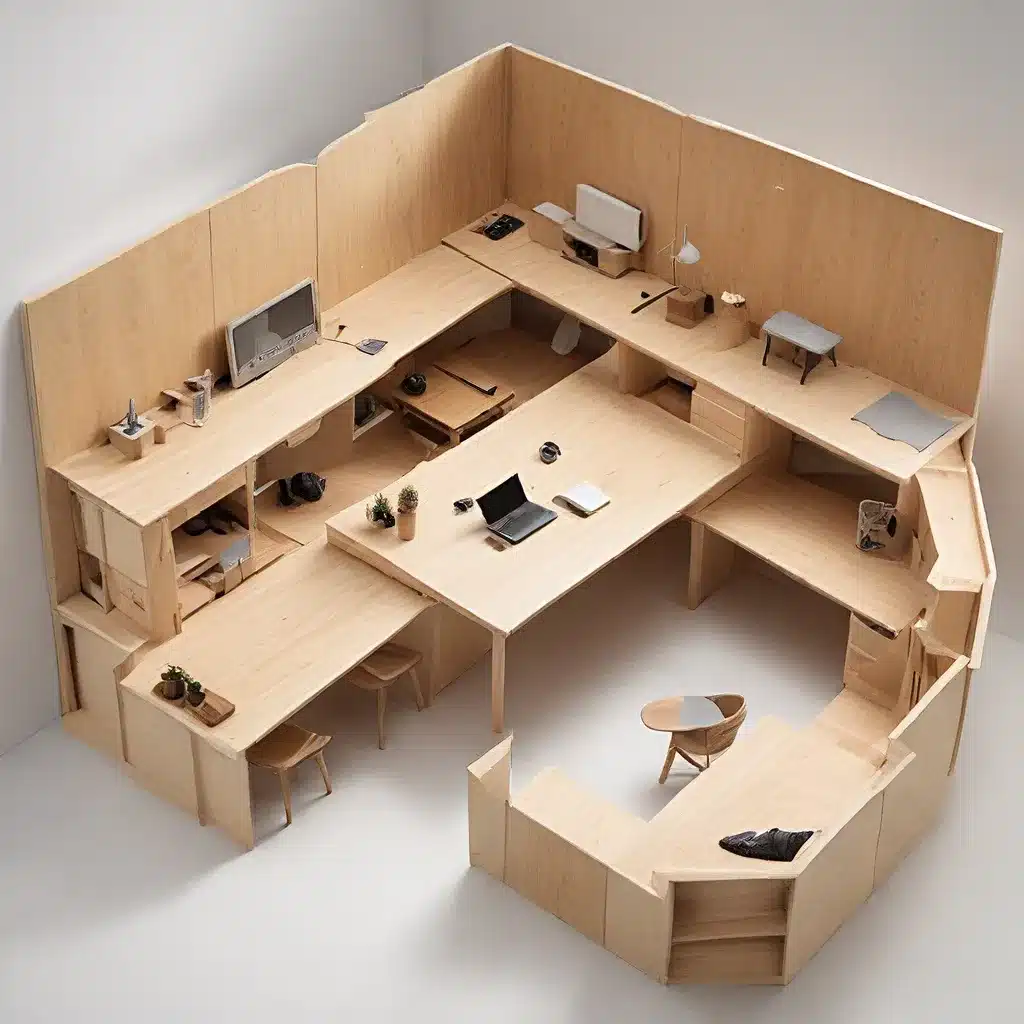
In the ever-evolving landscape of interior design, the concept of adaptability has emerged as a driving force in creating flexible living spaces that cater to the diverse needs of modern households. As the lines between work, leisure, and domestic life become increasingly blurred, homeowners are seeking multifunctional environments that can seamlessly accommodate their changing lifestyles.
The Rise of Flex Spaces: Optimizing Limited Square Footage
The global pandemic has undoubtedly accelerated the demand for adaptive design solutions. With more people spending extended periods within the confines of their homes, the need for versatile spaces that can effortlessly transition between different functions has become paramount. Whether it’s a dedicated study area that transforms into a cozy family retreat or a multipurpose cabinet that serves as a play zone, bedroom, and homework station, the integration of flex spaces is crucial in maximizing the utility of limited square footage.
One particularly innovative approach to adaptable living can be seen in the design of the “The Beloved Nest” project, featured on Archello. This 600-square-foot apartment was meticulously crafted to cater to the needs of a family comprising a mother, her two young boys, and their beloved cat. By embracing the concept of flexible spaces, the designers were able to create a harmonious and visually cohesive living environment that seamlessly adapts to the diverse rhythms and preferences of its inhabitants.
Multifunctional Furniture: The Key to Adaptable Design
At the heart of this adaptable design lies the integration of multifunctional furniture and storage solutions. These versatile elements not only maximize the utility of the available space but also foster a sense of organization and flow within the home. A prime example is the transformative cabinet that serves as a pivotal centerpiece within the living room.
This remarkable piece of furniture transcends its conventional role, morphing into a private sanctuary for the children, a dedicated study area, and even a cozy family gathering spot. By effortlessly transitioning between these diverse functions, the cabinet empowers the family to adapt their living environment to their evolving needs and routines.
Designing for Harmony and Emotional Connection
Beyond the practical considerations of adaptable design, the “The Beloved Nest” project also places a strong emphasis on emotional resonance and familial connection. The designers have meticulously curated the living environment to foster a sense of warmth, love, and security – akin to the nurturing embrace of a bird’s nest.
The integration of art, sculptures, and carefully selected decor elements imbues the space with an enriching and aesthetically stimulating ambiance, encouraging the children to explore and interpret their surroundings with newfound curiosity and creativity. This thoughtful approach to design not only meets the functional needs of the family but also nourishes their souls and strengthens the bonds that define the essence of their home.
Adapting to Diverse Lifestyles and Rhythms
One of the standout features of this adaptive design is its ability to cater to the diverse lifestyles and routines of the family members. Recognizing the differing sleep schedules of Charlotte and her mother, the designers have incorporated separate entrances and corridors to minimize disruption and ensure privacy.
Similarly, the strategic positioning of the dedicated study area between the children’s bedroom and the master bedroom allows Charlotte to attend to her professional obligations without encroaching on the family’s living space. This level of thoughtful planning and attention to detail ensures that each member of the household can thrive in their own rhythm, fostering a sense of harmony and individual well-being within the shared living environment.
Embracing the Flexibility of Outdoor Spaces
The concept of adaptability extends beyond the confines of the indoor living space, as evidenced by the design trends highlighted in the additional source information. The right outdoor furniture can make all the difference in creating a versatile and inviting outdoor oasis.
From modular seating arrangements that can be reconfigured to suit various gatherings to multifunctional pieces that seamlessly transition from day to night, the selection of outdoor furnishings plays a crucial role in maximizing the utility and enjoyment of these transitional spaces. By embracing the flexibility of the great outdoors, homeowners can create dynamic living environments that cater to their evolving needs and preferences.
Unlocking the Power of Professional Design Expertise
As the demand for adaptive and personalized living spaces continues to grow, the role of professional interior designers has become increasingly valuable. These experts possess the specialized knowledge and creative vision to transform a house into a truly customized and adaptable home.
By collaborating with skilled designers, homeowners can unlock the full potential of their living spaces, ensuring that every square foot is optimized to meet their unique needs and lifestyle preferences. From innovative furniture layouts to seamless integration of technology, professional designers can help homeowners create flexible environments that evolve alongside their changing requirements.
Urban Grace Interiors, a renowned interior design firm, offers a personalized approach to crafting adaptive living spaces. Their team of experienced designers works closely with clients to understand their specific needs, preferences, and the rhythms of their daily lives, then leverages their expertise to curate a harmonious and versatile home that serves as a true reflection of their clients’ unique identities.
Conclusion: Embracing the Future of Adaptive Design
As the world continues to evolve, the demand for flexible and personalized living spaces will only continue to grow. By embracing the principles of adaptive design, homeowners can create dynamic environments that not only cater to their practical needs but also nurture their emotional well-being and foster a profound sense of connection and belonging.
Through the strategic integration of multifunctional furniture, transformative spaces, and thoughtful design elements, homeowners can unlock the full potential of their living spaces, ensuring that their homes adapt and evolve in tandem with their changing lifestyles. By collaborating with skilled interior designers, homeowners can unlock the secrets to crafting truly adaptive abodes that embody the essence of modern living.

